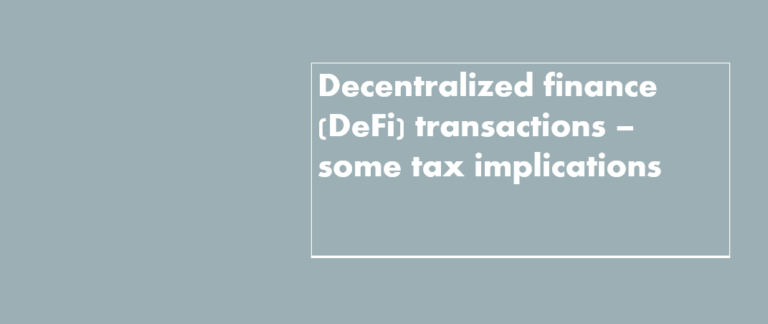
CARF and the amendments to CRS to cover a variety of digital assets were released in October by the OECD. CARF does include comprehensive frameworks and guidelines which aim at increasing transparency in the sector. It mandates digital market intermediaries, such as crypto-asset exchanges and wallet providers (referred to as reporting crypto asset service providers), to do due diligence-procedures to identify their customers and to report customer’s aggregate exchanges and transfers annually to the local tax authorities.
This information can further be disseminated by local tax authorities to other tax authorities (resident country of the crypto user) under the Automatic Exchange of Information framework in a cross-border setup. It is yet to be seen how:
- CARF rules and commentary can be adopted in the domestic laws of the country – some countries already have some regulations for regulating this space and it is to be been how they integrate with these. Also, for domestic implementation, more stakeholders should be involved to assess the impact.
- Still, there are a lot of unaddressed points, and some believe that this may be tantamount to over-collection of data. Though some of this information may also have been provided under anti-money laundering laws – but that information may not be available to tax authorities because those are gathered for different purposes. Needless to say, more IT capabilities need to be developed to handle this.
- Framework for automatic exchange of information by bilateral/ multilateral competent authority agreement will be required where it is not already in place.
Like CRS did increase visibility and transparency especially in relation to offshore transactions – CARF will also increase transparency once the system and implementation framework in domestic laws of the countries are streamlined. Though, some feel that the entire essence of decentralization will be lost if the sector is overly regulated. But considering the uncertainty/ volatility in the sector, once it is sufficiently regulated, more investments may flow in the sector leading to the sector becoming a more mainstream sector.
In all, the CARF does set some base and one step in the direction of international coordination.
The recent experience of BEPS Action Plan 1 and the Pillars 1 and 2 from the OECD regarding the taxation of the “traditional” digital economy (not related to crypto) would be evidence that we are near or far of solving the tax challenges related to crypto assets?
We all know what is going on in the digital taxation space. Pillar 2 is general doesn’t cover much on taxation of the digital economy – it’s about global minimum taxation. Pillar 1 does cover allocation of taxing rights, but it seems it is far from reality yet. Also, with Pillar 1 countries gaining not much – it seems we will continue to see more of the unilateral measures. Even if countries withdraw unilateral measures like Digital Services Tax (DST) – countries which had implemented VAT as a mechanic of taxation of the digital economy can still retain those VAT regimes after Pillar 1 & Pillar 2. Also, some countries may come up with some other form of levy if not in the name of digital taxes for domestic resource mobilisation where it is realised that not is gained by Pillar 1 & Pillar 2 in their country .
The current global solution also doesn’t cover all limbs of taxation of the digital economy and not all actors of the value chain are considered. Accountability and taxation of data is another issue. Web3 and crypto space have created a whole lot of new open questions in the tax world. Countries have been taking diverse mechanics of taxing it in terms of characterization, nature of income, taxable event, and head of income under which these can be taxed. It seems it is far from reality to see that all problems of taxation of crypto assets will be solved in the near future because of the anonymity/ nuances surrounding in the space.
And taxpayers will have to live with diverted measures and deal with diverging regulation! But hope should not die – at least we see one movement in international coordination in the form of CARF!
What are the most interesting in international tax matters related to blockchain and Web3?
Indeed, there are a lot of issues that the sector has raised from an international tax perspective. Some of the important ones to name could be:
- Source/Characterization/ qualification issues depending on the transaction types and its coverage in tax treaties – as to which tax treaty article may apply
For example:
Liquidity mining can be covered in the Dividends/Interest article based on the risk undertaken by the lender.
Sale and trading income may fall in Capital gains or may be in Royalty article in case of NFTs depending on the underlying rights transferred
Mining income in certain cases may be claimed as business income
- Different countries are characterizing it differently (like financial assets, intangibles etc.) and there is a lack of universal definition – it is yet to be seen if source-based rules can be harmonized here
- These would also raise various transfer pricing questions (for ex. – where digital assets are transferred from one entity to another mainly because of the difference in characterization in the domestic laws because of lack of universal definition)







